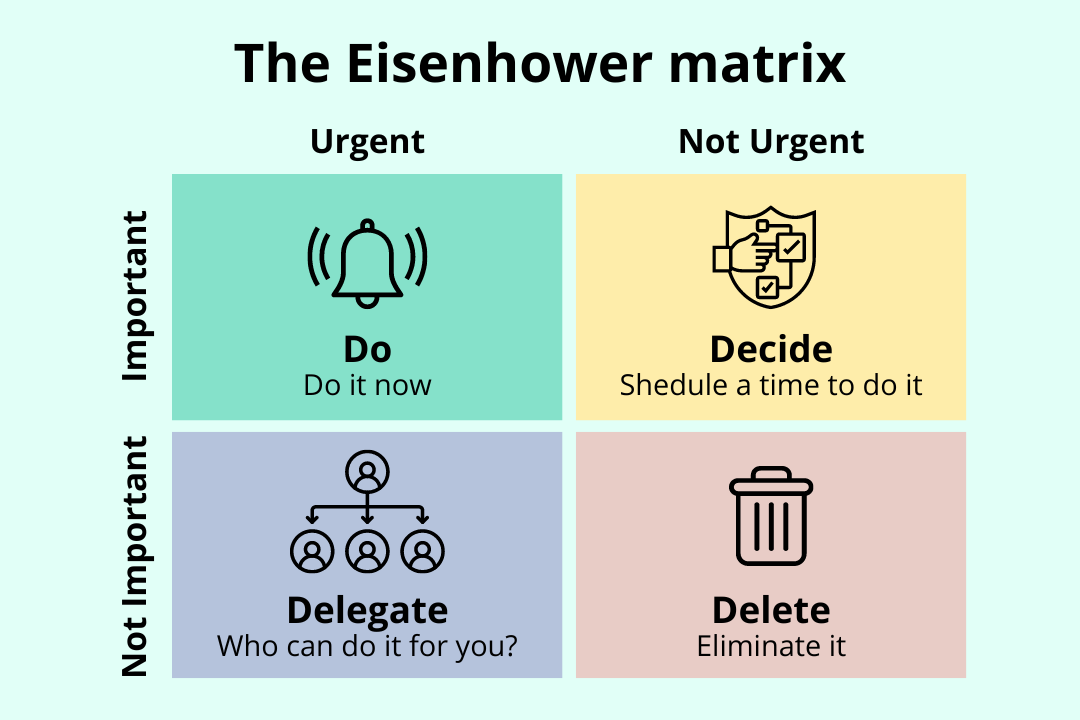In the information age, a massive amount of data is poured onto our desks daily; therefore, we need to learn how to prioritize work.
What’s worse is that it’s sometimes impossible to see through the data and distinguish between meaningful work and less critical tasks. This can result in you being spread thin, giving much attention to less vital tasks while letting the important ones slip under your radar.
Follow these six tips to ensure you’re spending your time wisely and effectively.
1. Don’t multitask
One of the biggest time-wasters is multitasking.
We’ve all been told that we can do more than one thing at a time, but research shows that’s untrue. Regarding attention, your brain treats multiple tasks as separate processes. So, if you’re trying to juggle work emails and writing an essay simultaneously, you’ll be less efficient with both tasks.
In addition to being less productive, multitasking can also cause stress.
You may also want to leave some free blocks of time during which no work gets done to help reduce stress caused by worrying about deadlines or other work responsibilities.
2. Use the Eisenhower matrix
The ability to prioritize work is crucial for anyone in a management position.
The Eisenhower matrix helps you organize tasks into four categories: important and urgent, important but not urgent, urgent but not important, and neither important nor urgent.
By prioritizing your workload using this method, you can focus on the activities that truly matter in your day-to-day work.

The four quadrants are:
- Important and Urgent (e.g., paying bills)
- Important but Non-Urgent (e.g., learning a new skill)
- Not Important but Urgent (e.g., responding to emails)
- Not Important and Not Urgent (e.g., surfing Facebook)
3. Set deadlines that are reasonable but challenging
Set a deadline that is challenging but not too demanding.
A good rule of thumb is to set your deadlines at least a few days from the date you want to complete the task. This gives you enough time to work on it without feeling rushed and keeps you focused and motivated to start on it immediately.
Don’t set deadlines that are too far away. If your deadline is still weeks away, it can be difficult for some people (including many procrastinators) to stay motivated until then, especially if they’re not used to setting their deadlines before they need them done!
Also, do not set too many deadlines at once!
This can lead to another problem: staying overwhelmed and stressed from taking on too much at once. On the other hand, it might seem like having multiple tasks due at once would keep things exciting and engaging for you. However, this only serves as an excuse for being unable to finish anything… before eventually giving up on all unfinished work because “everything’s impossible anyway!
4. Use the 2-minute rule
Deciding what to do next can be challenging when you’re overwhelmed with tasks.
When this happens, try the 2-minute rule. This productivity technique lets you make decisions quickly by deciding which task will take less than two minutes to complete.
Tasks taking two minutes or less can include answering an email or replying to a text message.
These small tasks are easy for your brain to process and don’t require much decision-making. Therefore, they can be done immediately without unnecessarily cluttering your mental space.
When used correctly, the 2-minute rule helps you finish more quickly!
5. Create a prioritized “to-do” list to know what tasks to complete first
To-do lists are an essential part of productivity. They help you plan and organize your day, week, month and year.
These lists can get long very quickly, so creating a prioritised list is important.
Start by listing the most crucial tasks on your mind. After completing that, write down all the subsequent tasks. This approach will prioritize your tasks and ensure nothing is overlooked in the long run!
Break down big projects into smaller steps. If you have large projects or goals you want to achieve in a certain amount of time, break each step into smaller chunks. Then, create actionable items for each step so it’s easier to see how everything fits together over time!
6. Learn to say no (and mean it)
Being able to say no is a valuable skill.
The excitement of a new project or opportunity can easily sweep us away, but deciding when to say yes or no is crucial.
It’s challenging to say no, as we often fear disappointing others or appearing ungrateful for not embracing new opportunities.
But saying no is good — it shows that you value your time and are willing to prioritize work wisely.
Here are some tips on how to say no:
Be honest: Ask yourself if something else could take priority over this new project or opportunity.
Is it urgent? Does it align with your long-term goals? Do you have enough time?
Only after answering these questions can you make an informed decision about whether or not this new opportunity will benefit your business right now.
Be honest with the other person: If you’ve decided that accepting this new project isn’t worth it for your business, be honest about why you need to decline their offer. If you give them a reason, they will understand their position and won’t find a reason to be upset with you.
The Bottom Line
You may have heard the saying, “Prioritize, then manage.”
The idea is to prioritize work by looking at your tasks and projects through criticality, importance, and urgency lenses.
Then, you can better manage your time to help you get those tasks done.
